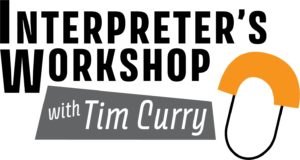Note: This was originally published in the efsli newsletter, December 2011, as an editorial page to members.
Communication Creates Connections
Dear members,
Well, another year has nearly come to an end. The little decisions we made each month are past. We can look back to see that not all of them are as important now as they were then. However, we know each decision we make in our lives, makes us who we are. Each decision is connected to the next and leads us to new ideas and paths. When I travel, I enjoy seeing new places and learning new cultures and histories. However, what I love most is my connection to other people. This human interaction is fulfilling.
This edition’s theme of “Dynamic Connections” opens our minds to the fact that each of us “network” for various reasons. The term networking is generally used in business scenarios for meeting new people in order to create working relationships that are mutually beneficial. I would propose that rather than networking in the interpreting profession, we should dynamically connect with one another.
Connecting with other people usually happens naturally. We have some common interest, work or even attraction. As interpreters, we meet many types of people regularly from all walks of life. We must be ready to understand how and why each type communicates to do our job. Communication whether it is verbal, non-verbal, or visual is what starts the connections. When we meet other interpreters at conferences, teaming work, or socially, we all have the connection of interpreting. Sometimes the connections go further as mentor to mentee, teacher to student, colleague-to-colleague, or deeper to friends. However, our relationships change as the
connections change. Sometimes our paths differ and therefore our connection differs. Our roles may shift, as student becomes teacher and vice versa. This is frequent in our profession since each interpreter grows based on his or her experience, skills, and knowledge.
Therefore, our connection today may change as we each grow in competence. So, think about the dynamic connections that we have and foster them through open minds, attentive to what others have to offer. Such dynamic connections is reflected in the articles and reports that follow in this edition. Many individuals are sharing ideas, joining to create awareness in society of the Deaf communities’ rights. Improving training and working conditions for interpreters is only one way we can support this.
Our president outlines the many activities efsli has been involved in this past year to support Deaf rights and the interpreting profession. The report on WASLI conference 2011 also shows the international commitment to fostering good dynamic connections. Reports from Lithuania and Albania and an article from Sweden share the conditions in those neighbouring countries. These and more articles enable us to see that there are many positive changes happening and yet there are still many connections that need to be made.
How do we connect? As I stated earlier, communication is key. Without dialogue, the connection becomes weak, based on old information. Continued communication allows for stronger bonds, new links, or both…that is to say, dynamic connections.
As we look to the New Year, I challenge us all to review our needs, renew our goals and dynamically connect with each other as we strive to improve our profession and ourselves.
Tim Curry, efsli Editor
